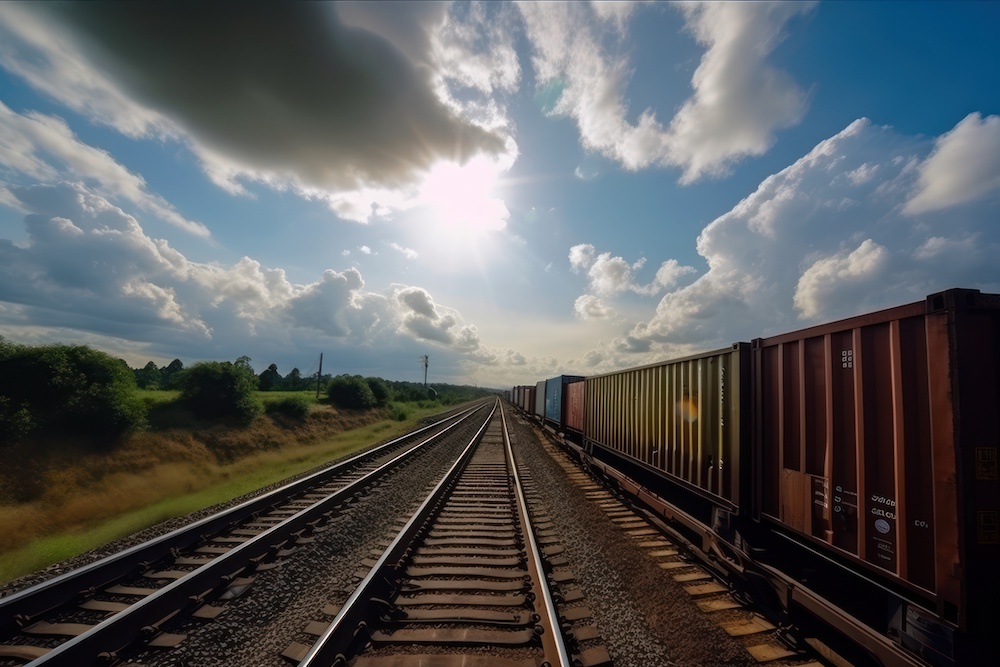 Jason Durk Principal Transportation Consultant, 3Squared
Jason Durk Principal Transportation Consultant, 3Squared

The future of rail freight holds huge potential, underpinned by its vital role in contributing £2.45bn to the UK economy each year, and touching every part of the economy daily. Rail freight’s environmental benefits carry equal significance. In an era where decarbonisation takes centre stage in the political landscape, modal shift could provide a vital pathway to curbing carbon emissions within supply chains.
However, it’s important to acknowledge that rail freight grapples with a distinct set of challenges - notably the industry’s deeply ingrained operational practices and traditional systems, which have created barriers in terms of efficiencies and customer service mentality. So, if the challenges are deeply rooted, how can the freight industry transform its operations, while seizing emerging opportunities?
3Squared delved more deeply into these topics in its recently released white paper: The Future of Freight, Unlocking Potential to Transform Freight Operations, which includes valuable insights from freight customers and expert spokespeople from across the field. Some key findings from the report are outlined below.
Better access to data
In producing the white paper, 3Squared engaged in conversations with numerous freight industry stakeholders. A prevailing sentiment that emerged was that rail freight was deemed as slow and inflexible, especially when compared to road transport, which was seen as more dynamic. The white paper highlighted how having access to relevant data can play a pivotal role in driving innovation across the freight sector. Data empowers better decisions, and visibility of the right data across multiple touchpoints enables decisions to be made more quickly. An illustrative case in point is the seamless tracking of a customer’s container all the way from China, which can then be tracked on a truck - if transported by road - but if it transfers to the railway, it falls into a black hole. Relevant and up-to-date data in the rail freight space is hard to come by, and this perpetuates the view that the railway is slow and inflexible. Having better access to data and increased availability of open data platforms could help to overcome this ongoing challenge.
The road versus rail dilemma
The logistics sector is acutely aware of the positive environmental impacts that modal shift can provide right across the supply chain; the green credentials of rail over road are widely acknowledged and discussed in many circles. However, the dichotomy exists in terms of how you trade off those positive benefits versus taking business away from the road hauliers.
The Government’s decision to cancel the northern leg of the HS2 route also complicates efforts to reduce road haulier dependency. It’s evident that government intervention is essential to better facilitate modal shift. But at the same time, the logistics industry needs a joined-up plan that enables customers to benefit from the positives of rail without adversely impacting the profitability of road hauliers.
This equal playing field could be achieved through collaboration, planning and utilisation. For instance, through better rail-connected locations, using rail for the main part of the journey and road for the first and last mile, and having a customer solution that plans this automatically. This approach would help to reduce HGVs from our strategic road network, while concurrently delivering the environmental benefits of rail. As environmentally friendly transport becomes more prevalent, this should naturally accelerate the progress towards achieving Net Zero.
Cross-industry collaboration is urgently needed
The white paper highlighted that typically, each part of the freight supply chain has access to their company’s data and has solutions to their individual problems. However, it also underscored a crucial challenge: many companies within the supply chain lack visibility to one another’s data, problems, or solutions. Through collaboration and mutual sharing of problems, ideas and potential solutions, a more cohesive interoperable system can be developed to elevate the collective capabilities of the supply chain. By joining forces and collaborating effectively, rail freight can start to innovate in ways it didn’t think possible.
More freight, greener freight, and more technology-enabled freight
As Rail Freight Group’s Maggie Simpson eloquently explains in the white paper, there are essentially three pillars when it comes to the future of freight: more freight, greener freight, and more technology-enabled freight.
There has been significant investment in the railway to better accommodate rail freight in recent years, and to help the drive to Net Zero – the Solent to Midlands multimodal freight strategy is just one programme of works by Network Rail to relieve congestion caused by HGVs on the A34 corridor. This led to Solent Stevedores and the Associated British Ports investing in new infrastructure at Southampton Western Docks to enable growth.
There has been investment into greener locomotives and bi-mode and tri-mode rolling stock. The development of more innovative ways for transferring freight onto the railway, eg. using old passenger services for on-demand parcel freight, are all contributing to greener freight. While these investments are fantastic, and contribute greatly to the drive for modal shift, they are only a part of the solution.
3Squared’s work on PathPlanner – a digital tool which uncovers hidden freight paths – involved extensive stakeholder engagement. 3Squared held discussions with dozens of players spanning the entire supply chain. While they all grappled with their own varied problems, they also shared the common view that network capacity is at a premium, the planning process is complicated and slow, and that data and information is not readily available.
All these factors contribute to the perception that the railway is inflexible, and this perceived inflexibility is adding to the opinion that it’s difficult to compete with road. So, to build on those three pillars and turn this viewpoint around, we need to operate in an environment which enables growth across all of freight’s key areas. For this to happen, the trend for 2024 onwards must be one that focuses on investment, transparency, and collaboration.
For further insights into the future of freight, visit 3Squared’s website to download the free white paper: www.3squared.com/how-we-help/freight-operators/